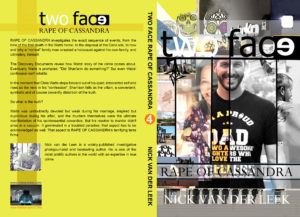At 3:08 into his address to the court on November 19th, Weld County District Attorney Michael Rourke noted the following:
“The only injuries that were on Shan’ann’s body were one set of finger…er…or bruising…what appeared to be fingernail or fingermark…bruising…to the right side of her neck….It takes 2-4 minutes to strangle someone to death – manually.”
Although Rourke doesn’t mention the Hyoid Bone here by name, we know from the Discovery Documents that this is the area of Shan’ann’s neck he was referring to, where bruising was found.


Chris Watts claimed in his Second Confession that he manually strangled Celeste and Bella. If that were true, we’d expect to see some sort of bruising in the same area as Shan’ann’s neck. And since the Hyoid Bone structures are much smaller and more fragile in toddlers, and Watts’ hands relatively much larger and stronger, we’d expect far more damage to these structures in the little girl’s necks.
But we don’t.


What this suggests is:
- Shan’ann may have been strangled by hand, or by using a rag soaked in ethanol pulled over her nose and mouth, or a plastic bag, which she desperately tried to remove. This might have resulted in tiny fingernail incisions from her own fingernails. [This is difficult to confirm without seeing the autopsy images firsthand, but this was a feature in the Rohde case].


- Both Bella and Celeste were almost certainly NOT manually strangled, and both children would have been primed to panic and resist had they been aware of their mother’s precarious situation. They may have been drowned, or killed or smothered in another way so as to prevent bruising/injury [either to them =- to their necks – or to Watts].
- If the children were killed first, then Watts had already “learned” how to execute a quiet murder without leaving evidence of his own actions on his victims, or being wounded in the process. If he succeeded in the initial double homicide, he would have tried for the same result with Shan’ann. He almost succeeded. It’s likely she winged him on the neck with her fingernails while she was facedown, with her attacker on top of her, and behind her, exerting force on her throat from behind.
To be a True Crime Rocket Scientist means to understand the nuances of the Hyoid Bone. The Hyoid Bone is basically a litmus test for manual strangulation. It’s a tremendously important artifact in True Crime pathology, perhaps even more significant and condemning than cadaver traces. It’s also one of those areas murderers typically don’t know about, and criminal courts should know more about.
To be clear, the Hyoid Bone is also an important feature in the Rebecca Zahau case, the Amanda Knox case, even JonBenet Ramsey. It can be a tricky piece of evidence because, especially if it’s engineering is not understood, it can be argued both ways by expert witnesses and often is.
Let’s quickly breeze through reference to the Hyoid Bone in the three aforementioned reference cases:
REBECCA ZAHAU:

Source for this reference from the autopsy report: Oxygen.
AMANDA KNOX:

Source for this reference from the autopsy report: The Telegraph.
JONBENET RAMSEY:

Source for this autopsy report: CrimeOnline.
The three references above may be familiar to True Crime afficionados, so let’s add a fourth that might not be. It’s from the recently concluded Roderick Covlin case.
Covlin assumed he could get away with murder simply because Orthodox Jews are generally against the practise of performing autopsies. This could have guaranteed him to collect an inheritance of over $5 million from his ex-wife, just hours after she communicated that she intended to disavow him.

How it works is due to the unique structure of the Hyoid Bone, if its damaged it tends to indicate manual strangulation. When ligatures are used [for example in the JonBenet case, and in murders staged to look like suicides [Rebecca Zahau and Susan Rohde] what we expect to see is no damage to the Hyoid Bone. To understand how this works, and why the mechanism of ligature strangulation tends not to harm the structures [the horns] of the Hyoid Bone, we need to look at where the structure fits into the throat.

It’s relatively high up and close to the jaw, and ligatures are often lower and cut into the throat below and perhaps above the Hyoid Bone. It’s a unique structure because, like the cartilage of the nose, knees and ears, it’s relatively loose. So when extreme force is applied, the cartilage tends to slip out of the way.
With manual strangulation, the hands and fingers prevent the Hyoid Bone from slipping, and this structure is often crushed or fractured.

I learned about the remarkable idiosyncrasies of the Hyoid Bone while researching the Zahua and Rohde cases simultaneously. In both cases, the murder suspects claimed the victim wasn’t strangled, but that she [Rebecca and Susan respectively] had hung herself. One way of proving the case, one way or another, was to look at the Hyoid Bone in both instances. If the Hyoid Bone was undamaged, it would suggest hanging. If it was bruised or fractured, or there was bruising or hemorrhage immediately adjacent to it, this would indicate ligature strangulation [hanging]. One has to be careful being too reductionist about it, because manual strangulation can involve a ligature. It’s very likely Susan Rohde was strangled with the belt of her nightgown.
A differentiating factor in terms of a ligature from manual asphyxiation and hanging is that a person hanging will tend to have a ligature rising at the back of the neck. A manual ligature will tend to be horizontal.

A mannequin was used in the Rohde case to demonstrate the ligature. To make it even more complicated, one must add to the equation the possibility of post mortem ligatures [as part of the staging process]. Can ligatures form on a dead body, and can the Hyoid Bone be damaged as part of post mortem staging?
In the Rohde case it became quite confusing, with two experts for the state arguing convincingly about damage to the Hyoid Bone, and two experts for the defense basically jumbling everything into a big mess, making a confused muddle in which many possibilities were entertained. They also argued that since Susan was half standing while she hung herself, the ligature wouldn’t necessarily be “more vertical”.
In the end the Judge went with the state, and accepted the well-worn wisdom that a damaged Hyoid Bone, which besides being slippery, is a tough and elastic structure, tends to indicate manual strangulation and therefore murder.
In intimate partner murders, especially between husbands and wives, or ex-wives, the Hyoid Bone is as damning as cadaver odor was to the McCanns, Casey Anthony and Scott Peterson. But the fact that the MSM version of how the Watts children were murdered defaults to manual strangulation – in contradiction to any corroborating evidence – shows the True Crime genre still has much to learn from the forensic pathology side of things.
More: Rohde Trial: The 1 Factor that determines murder or suicide
Below are additional excerpts from the Rohde Trial Judgment related to the Hyoid Bone.


















Recent Comments